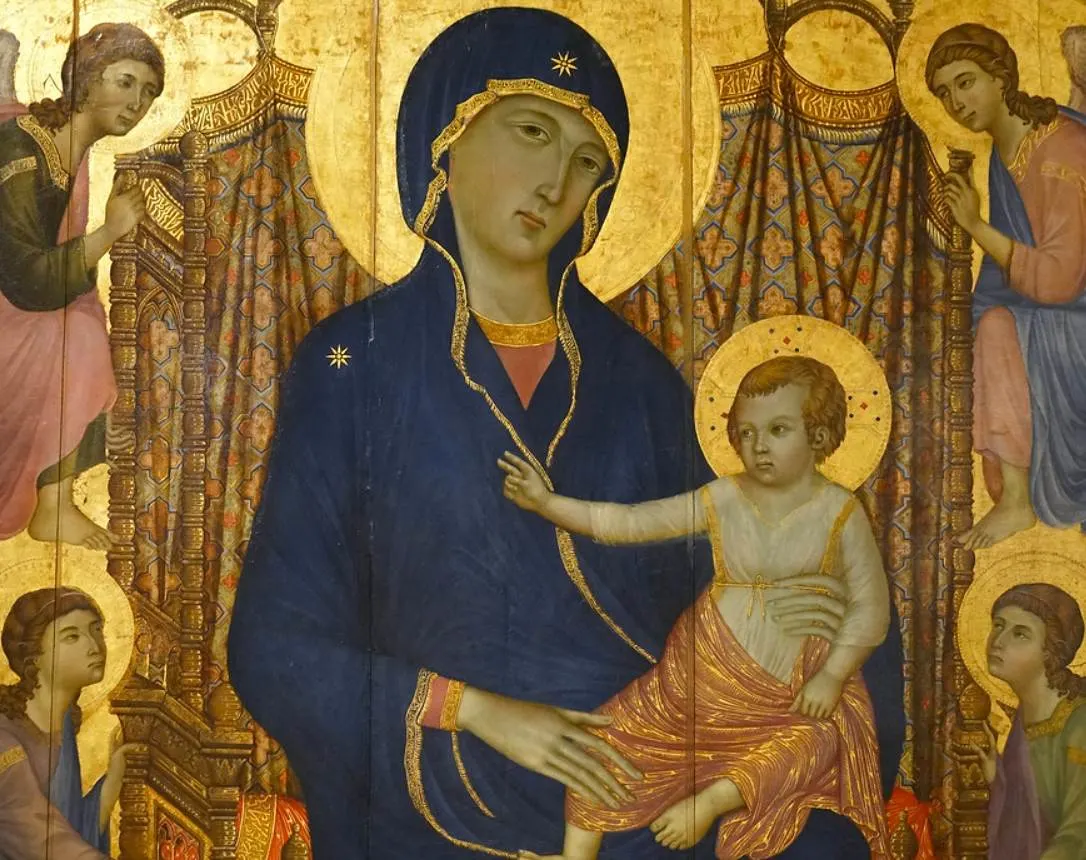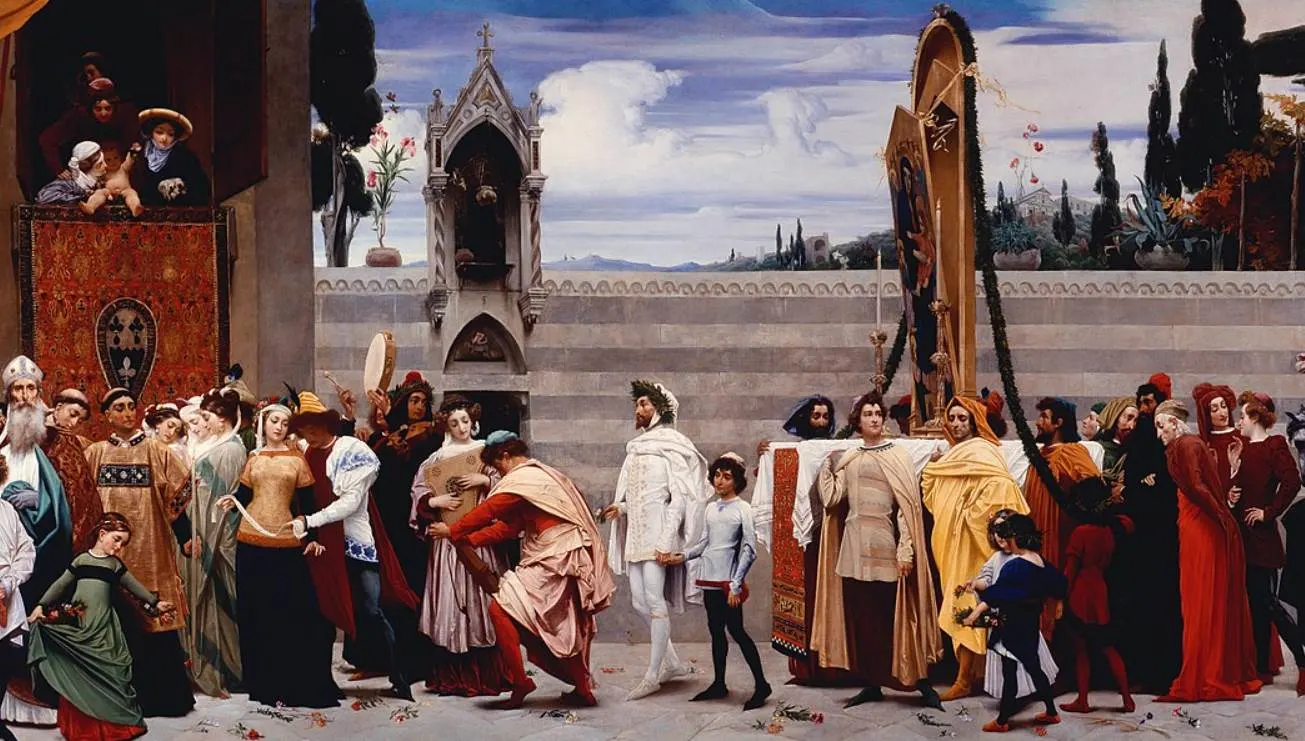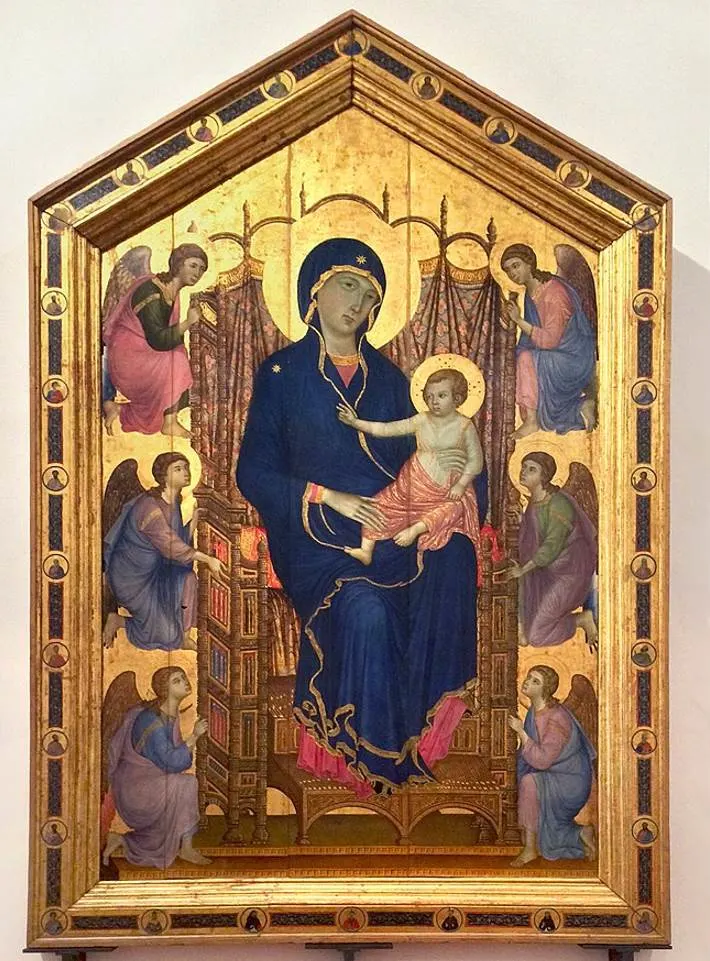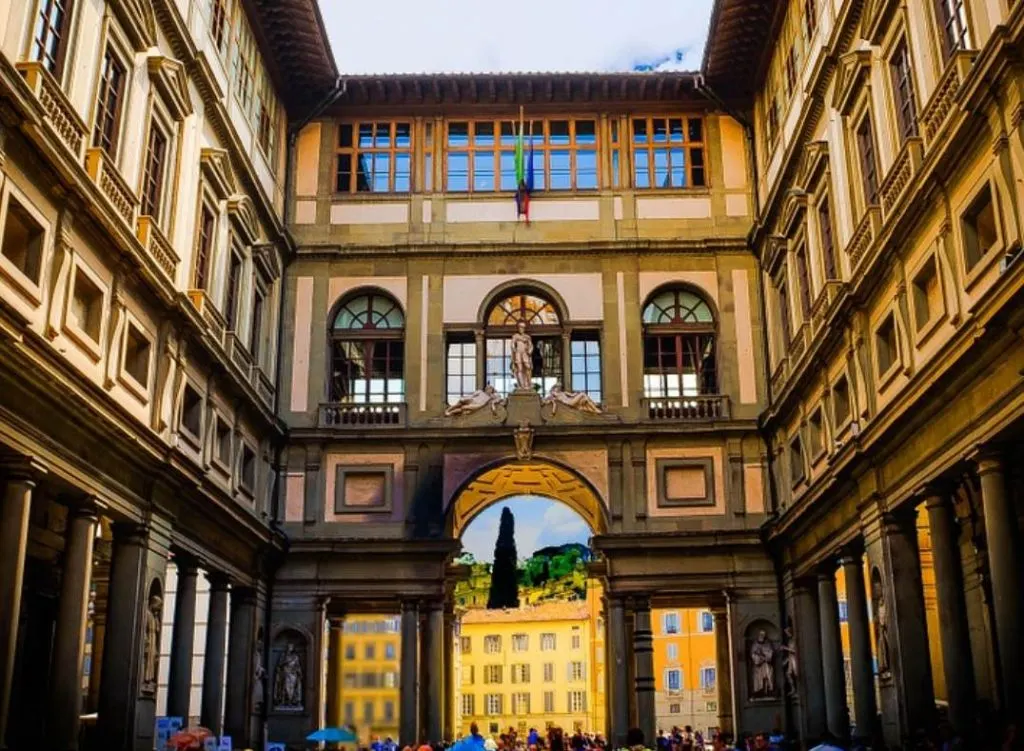One of the ultimate treasures of Gothic art has a history that goes back to the late 13th century.
It depicts a traditional Christian scene during the Middle Ages and was completed by one of the most renowned Gothic artists in history.
In this article, you’ll discover some of the most interesting facts about the Rucellai Madonna by Duccio di Buoninsegna (1255-1319), a fascinating painting by the Italian artist.
1. The painting was completed during the 1280s
The Rucellai Madonna is the title of one of the ultimate masterpieces by Duccio di Buoninsegna, an Italian artist of the Sienese School during the Gothic era.
Duccio was from Siena, a city in the Tuscany region of central Italy, and is generally considered to be one of the greatest painters of the Middle Ages.
Because he lived over 800 years ago, the story of his life is rather obscure. It’s clear, from surviving documents, that he lived and worked in Siena for most of his life.
He was influenced by Byzantine art. It’s not certain whether or not he traveled to Constantinople and studied under a Byzantine master or learned his skills from a local master.
Regardless of his exact life story, he completed the Rucellai Madonna between 1285 and 1286, a time when he was either in his late 20s or early 30s.

2. It depicts the enthroned Virgin and her child Jesus Christ
Duccio specialized in Marian art during his career and painted multiple versions of the enthroned Virgin Mary who is holding her baby Jesus.

The common scene of these Madonna paintings was to place them on a ridiculously large throne while being surrounded by angels.
Apart from the central part of the painting, the frame also features roundels. These represent saints, apostles, and important members of the Dominican Order such as Saint Dominic and Thomas Aquinas.

3. It’s the first of two dated paintings by the Gothic master
The contract of the painting is the oldest surviving document of its kind. It’s dated April 15, 1285, and explains in great detail how Duccio was supposed to complete the painting.
Most of the paintings that have been attributed to Duccio have been done so based on stylistic elements. Only one other painting in his oeuvre was dated.
His other dated painting was completed between 1308 and 1311 and is called the “Maestà” or the “Maestà of Duccio.”
This painting was on display at the Siena Duomo until it was dismantled in 1771. Some pieces of it spread around the world while the remaining are on display in the Siena Duomo Museum.

4. It was commissioned by a confraternity in Florence
The Rucellai Madonna was commissioned by a confraternity known as the Compagnia dei Laudesi. They were worshippers of the Virgin Mary and commissioned the painting for devotional purposes.
This confraternity hung it in their chapel at the Santa Maria Novella church in Florence and it stayed there until 1591.
This was the year it was placed in the Rucellai family chapel which is how the painting got its current name.

5. It was painted before oil painting was introduced in Europe
Oil didn’t become the standard material for paintings until the early 15th century. Early Netherlandish painters such as Jan van Eyck (1390-1441) perfected it back then and it spread all across Europe shortly after.
In Duccio’s time, egg tempera was the standard material to paint. The confraternity also stated that they wanted a real gold leaf background which was a Byzantine influence.
The blue robe that Mary wears was supposed to consist of the expensive lapis lazuli, paid for by the artist. He used, however, the cheaper azurite.
The members of the confraternity didn’t notice it but a restoration project conducted in 1989 uncovered this cheat.

6. The painting was erroneously attributed to Cimabue for many centuries
Giorgio Vasari was one of the most renowned art historians of the 16th century and his work titled “Lives of the Most Eminent Painters, Sculptors, and Architects” features tons of valuable information.
He did, however, sometimes make mistakes, and did so when he attributed the Rucellai Madonna to Cimabue (1240-1302), a slightly older contemporary artist from Florence.
This misidentification lasted until the late 19th century, a notion emphasized by a painting by the English artist Frederic Leighton (1830-1896). titled “Cimabue’s Celebrated Madonna Carried in Procession through the Streets of Florence” (1853-1855).
This work depicts the Rucellai Madonna and was completed at a time when the true identity of the artist hadn’t been revealed yet, something that only happened in 1889.

7. How big is the Rucellai Madonna by Duccio di Buoninsegna?
The Rucellai Madonna holds the amazing record of being the biggest panel painting of the 13th century that has survived until today.
It was completed using tempera and gold leaf on a 5-pieced poplar panel and has dimensions of 450 × 290 centimeters (180 × 110 inches).

8. Where is the painting located today?
The painting has a remarkable history. It was commissioned by a confraternity based in Florence from an artist based in Siena.
This might seem to be normal today, but this was certainly not the case because of the tensions between both Tuscan cities during the Middle Ages.
Another remarkable notion about the commission is that Siena considered the Virgin Mary to be both the patroness and Queen of the city, the reason why most Sienese artists specialized in Marian art.
Regardless of this, it hung in the chapels of the Santa Maria Novella church in Florence until it was transported to the Uffizi Gallery in the 19th century.
Today, it hangs together with two other Gothic masterpieces at the Uffizi called the “Santa Trinità Maestà” (1285) by Cimabue and the “Ognissanti Madonna” (1306) by Giotto.

